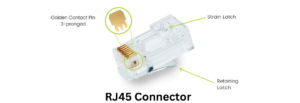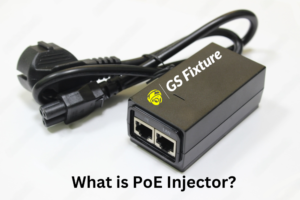What Is Ethernet Cable?
On interconnected networks, Ethernet cables are a type of network cable. They were developed to connect network hardware. All sizes of cables are available. You can choose any length according to your needs. Routers, PCs, and switches are just a few examples of equipment connected by Ethernet connections to LAN systems.
Different Categories of Ethernet Cables:
- CAT3
- CAT5
- CAT5e
- CAT6
- CAT6a
- CAT7
- CAT8
Categories of Ethernet Cables:
There are many different types of Ethernet cables available, and each one has a specific usage and function. In order to gain a thorough understanding of the various Ethernet cable types, it is crucial to comprehend each cable and its intended use. The better cable must be chosen because it will be stronger, faster, and more suited to your unique requirements.
However, you can choose your ethernet cabling category from the list below based on your gear.
Category – 3:
A maximum frequency of 16 MHz is supported by Cat3 cable, which is an older model of cable. There could be 2, 3, or 4 copper pairs in this cable. For 10BASE-T networks and two-line phone systems, the Cat3 Ethernet cable is still in use. Installation of alarm systems and other related applications also use it.

Category – 5:
Twisted pair conductors make up Category 5 (CAT5) cable, a multi-pair (often 4-pair) high-performance cable that is primarily utilized for data transmission. The fundamental CAT5 cable was created to support characteristics up to 100 MHz Ethernet networks that run at 10 or 100 Mbps commonly employ CAT5 cable.

These cables are slower compared to modern-day hardware requirements.
Therefore, you should only use this kind of cable if your older hardware requires out-of-date hardware.
Category – 5e:
Cat5e is one of the most widely utilized ethernet cable cabling types for deployments because it can provide Gigabit speeds at a reasonable cost.
Category 5e (CAT5e) cable, also known as Enhanced Category 5, is designed to support full-duplex Fast Ethernet operation and Gigabit Ethernet.

Cat5e is adaptable enough for small space installations because it supports rates of up to 1000 Mbps. As a result, residential areas use it frequently. One of the most affordable types of cabling on the market is cat5e.
Category – 6:
Category 6 (CAT6) cable performs better than Cat5e and has stricter requirements for crosstalk and system noise.
The effectiveness of the channel’s components determines how well data is transmitted.
Jacks, patch cables, patch panels, cross-connects, and cabling must all adhere to CAT6 requirements in order to transport data in accordance with their specifications. The performance of the CAT6 components is tested both individually and collectively. The standard also specifies a generic system performance level, allowing any CAT6 component from any vendor to be utilized in the channel.

Backward compatibility with CAT5e, CAT5, and CAT3 is required for all CAT6 components. With various category components combined with CAT6 components, the channel will perform at the level of the lower category for transmission. For instance, the channel will function at a CAT5e level if a CAT6 cable is utilized with CAT5e plugs.

Category – 6a:
Ethernet cable type Cat6A can accommodate bandwidth frequencies as high as 500 MHz, Because Cat6a cabling is thicker than Cat6, it is less flexible. Because of this, it is more suitable for industrial settings and less expensive.
For both shielded and unshielded cables, augmented Category 6 requires that they must operate at a minimum frequency of 500 MHz. On a channel with four connectors, it can enable future 10 Gb/s applications up to a maximum distance of 100 meters.

Category – 7:
Cat7 has the capacity to transport data at distances of up to 50 meters and 100 meters, respectively. In order to reduce signal attenuation, this kind of ethernet cable has considerable shielding. In comparison to earlier cable generations, it is fairly stiff.
Large enterprise networks and data centers are good places to use Cat7 kind of cable. However, the Cat7 cable standard for telecommunications has not been ratified.
Category – 8:
Category 8 cable may operate at frequencies up to 2000 MHz. CAT8 cables are compatible with 25/40GBASE-T Gigabit Ethernet; this lowers power consumption and is meant for applications that require a lot of bandwidth in data centers.
Short distances between units make use of this type of cable desirable. Ethernet cables from earlier categories can be used with CAT8 cables.
Difference Between CAT7 and CAT8.


Types Of Cables:
Coaxial Cable.
The industry standard for 10 Mbps Ethernet cables is a coaxial cable. These cables are made of additional shielding and an inner copper wire cover with insulation.
It has a plastic covering that act as insulation between the center conductor and the drained metal shield. A single copper conductor is present in the middle of the coaxial cable.
There are many types of coaxial cables but in this article, we will tell you about the most commonly used types of coaxial cables.
RG6 Cable:
RG 6 is typically a much superior option for your broadband internet, CATV, satellite, or TV antenna. In general, RG 59 is preferable for CCTV systems. The frequency ratings that your equipment uses are essentially what you need to think about. You should choose RG 6 if your device operates at higher frequencies (over 50 MHz). You should use RG 59 if your frequencies are lower than that.
RG59 Cable:
There has been RG59 cable for a very long time. In the past, the majority of individuals connected to their cable TV with this cable. However, in recent years, this cable’s popularity has decreased due to current signal requirements. Because RG 59’s conductor is smaller than RG 6’s, it cannot provide a signal of the same quality. Additionally, due to the way its shielding is constructed, gigahertz-level impulses are not kept inside the conductor very efficiently. This is why using RG 59 for your TV or internet connection is generally not a good idea.

Physical Difference of RG59 and RG6:

Lower frequency communications (those under about 50 MHz) work well with RG 59. For a closed-circuit television (CCTV) video monitoring system, it is a wise choice. You can even purchase a “Siamese coaxial cable” to make installation simpler. A 2C power cable and an RG 59 cable have been combined to create this cable. This type of cable allows you to concurrently run the power and video for your security cameras, effectively halving the installation time. Additionally, some older HD TVs continue to operate at lower frequencies (about 37 MHz), so RG 59 is a better option for them.
Optical Fiber Cable.
The majority of Optical Fiber cables are made up of a central glass that is surrounded by several layers of protected materials. Electrical interference is not a problem with fiber-optic cable since light is transmitted instead of electronic signals. This makes it the perfect option for settings with high levels of electrical interference.

This kind of network cable allows for the transmission of signals across greater distances. Additionally, it has the capability of faster space information transmission.
There are two varieties of fiber-optic cables:
Single-Mode Fiber (SMF):
Data is sent using only one light ray in this kind of Fiber Optic connection. used for wiring across longer distances.
Multi-Mode Fiber (MMF):
This kind of fiber optic carries data via numerous light rays. more affordable than SMF.
Twisted-Pair Cable:
To prevent electromagnetic interference (EMI) from other wire pairs, twisted-pair cabling twists together pairs of wires.


